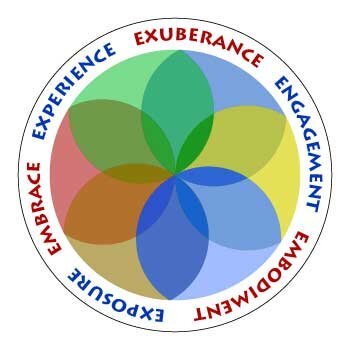What's the point?
Note: a version of this essay was originally published in Paleo magazine, August 2013
As a people, we have become obsessed with Health. There is something fundamentally, radically unhealthy about all this. We do not seem to be seeking more exuberance in living as much as staving off failure, putting off dying. We have lost all confidence in the human body.
Lewis Thomas The Medusa and the Snail
You just never know where the insights are going to come from.
A few years ago, some friends and I attended a big health and fitness conference with some notable speakers on all the typical subjects. We sat in the back of the auditorium, watching and listening as a line-up of distinguished authorities drilled down into the fine-grained details of nutritional biochemistry, biomechanics and training. Their presentations were detailed in the extreme, all the way down to the molecular level. Some even went quantum.
When the presentations concluded for the day, we were somewhat the worse for wear. Out in the lobby, as we struggled to put the avalanche of information into perspective, one of my friends just shook his head and quipped, “You’re still gonna die.”
We laughed, but his comment stuck with me. His point, of course, was that no matter how sophisticated and powerful our knowledge might be, our bodies are still subject to the ultimate constraints of physics and biology. We may know every last detail of nutrition, biomechanics and training, but we’re still living smack in the center of the human predicament. We can analyze, measure and study until we’re blue in the face, but we are still vulnerable, fragile organisms living in a highly dynamic, fundamentally impermanent world. No matter how hard we train, no matter how perfect our diets, “we’re still gonna die.”
Which brings us to the paradox and delusions of the modern health and fitness industry. That is, we put so much energy into analyzing our workouts, weighing our food and micro-managing every detail of our lives, we have to wonder what exactly it is that we’re trying to do. Are we trying to celebrate life in all its mystery and insecurity, through vigorous physical movement? Or are we trying to escape from our earthly predicament? Are we going towards something or away from something?
When we look at the magazine rack, the popular health and fitness industry now comes across like one vast, fear-based effort to protect and defend ourselves from the impermanence of the world. We hear preposterous claims about “turning back the clock” and “age-proofing” our skin and bodies. We read about “injury proofing,” and “stress proofing” as if we might somehow insulate ourselves from the realities of biology. But this effort is destined to fail: When we try to death-proof our bodies, we simultaneously take ourselves out of the natural flow of life. In other words, death-proofing actually becomes a form of “life-proofing.”
If we read between the lines, today’s health and fitness conversation has a tinge of desperation to it: “If we just eat enough kale, do the right number of squats, run the right number of miles, take the right supplements and put the right substances on our skin, then we won’t have to face the unpleasant realities of aging and death.” Of course, this neurotic flight from aging and death is most prominent in the glossy health and fitness press, where “before and after” spreads hold out preposterous promises of infinite sex appeal and immortality. But we also see it in the Paleo community, with its relentless drilling down on biochemistry and fine-grained analysis of every molecule that goes into our bodies. Some have even taken to calling it “paleorexia,” an obsessive-compulsive preoccupation with food, diets and the promise of perfect, eternal health/immortality.
Don’t get me wrong. A Paleo-style, real-food diet surely makes sense for our health and vitality, and will probably extend our “health span” as well as our life span. But no level of dietary perfection will insulate us from the ravages of time and the cumulative traumas of life. Even the most vigorous wild animals, living in pristine natural conditions, eating perfect food and moving their bodies in perfectly natural ways, eventually loose their vigor and perish. Are we really expecting something more?
No matter how sophisticated our knowledge, there are certain inevitablities that we cannot escape: Our bodies are always being injured in daily activity–cancer cells are proliferating, mutations are being generated, pathogens are constantly attacking our tissue. Cellular repair mechanisms and immune defenses keep most of this damage in check, but the fact remains: we are constantly falling apart, always on the cusp, always poised precariously between life and death.
So what is health? Is it the ability to insulate ourselves from the flux and flow of life? Is our goal to become impervious to the natural biological decay that takes place in every organism on earth? If that’s the case then we are clearly on the wrong path. Maybe we need to re-evaluate our vision. Maybe it’s time to suspend our war on injury, aging and death. Maybe it’s time to look squarely at the impermanence of our incredible, beautiful, fragile and highly temporary lives.
Yes, health is a noble pursuit. With just a little more education, training and behavioral change, we could save millions of people from immense amounts of suffering. We could help reduce the levels of diabetes, heart disease, depression and neurological disorders. But let’s not delude ourselves; aging, illness, injury and death are part of who we are. Life is a package deal, one that includes loss, injury, disease and suffering. Rather of fleeing from it, perhaps we’d do better to embrace it in its entirety. Once we give up our attachment, we can live life more completely, in total health.
